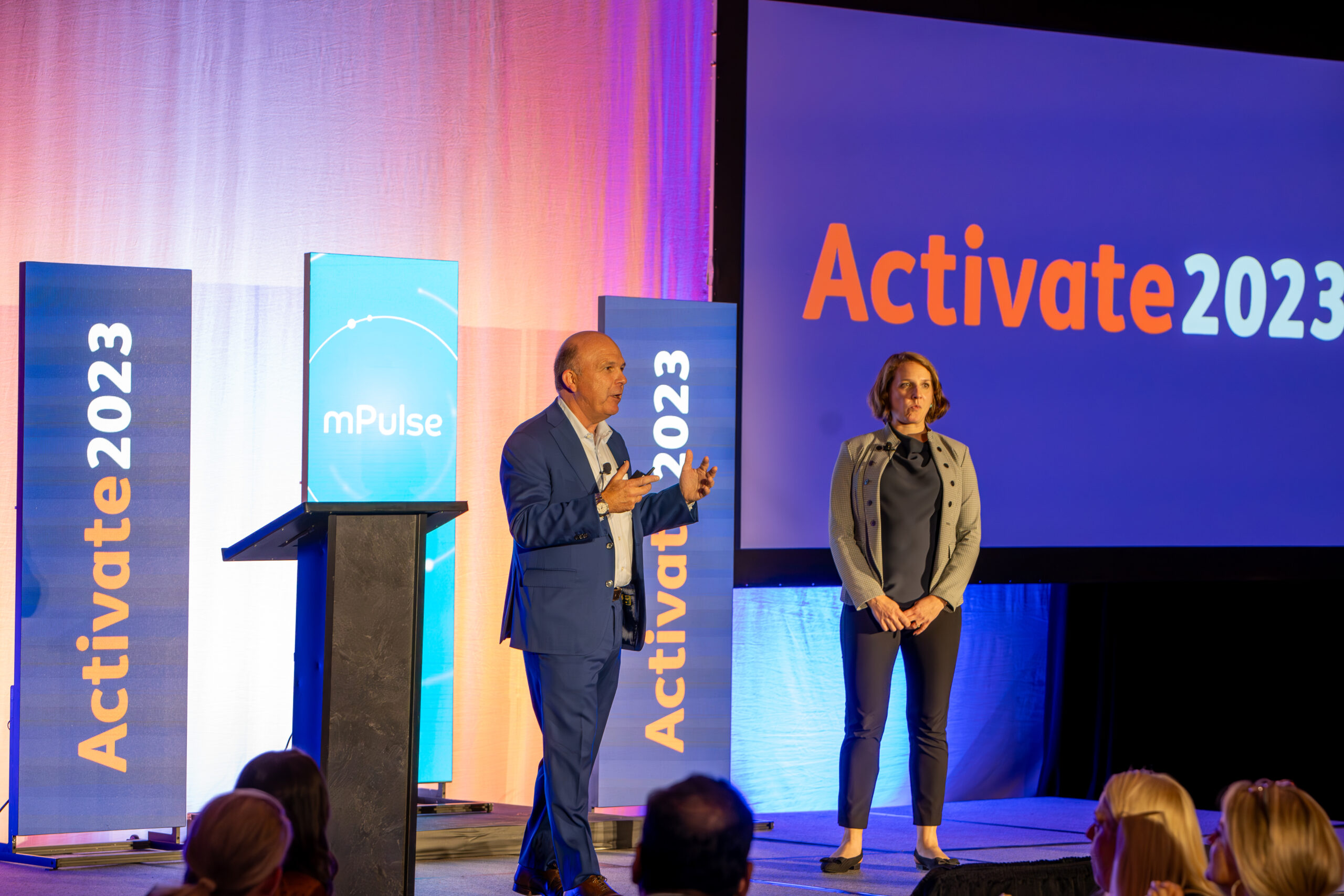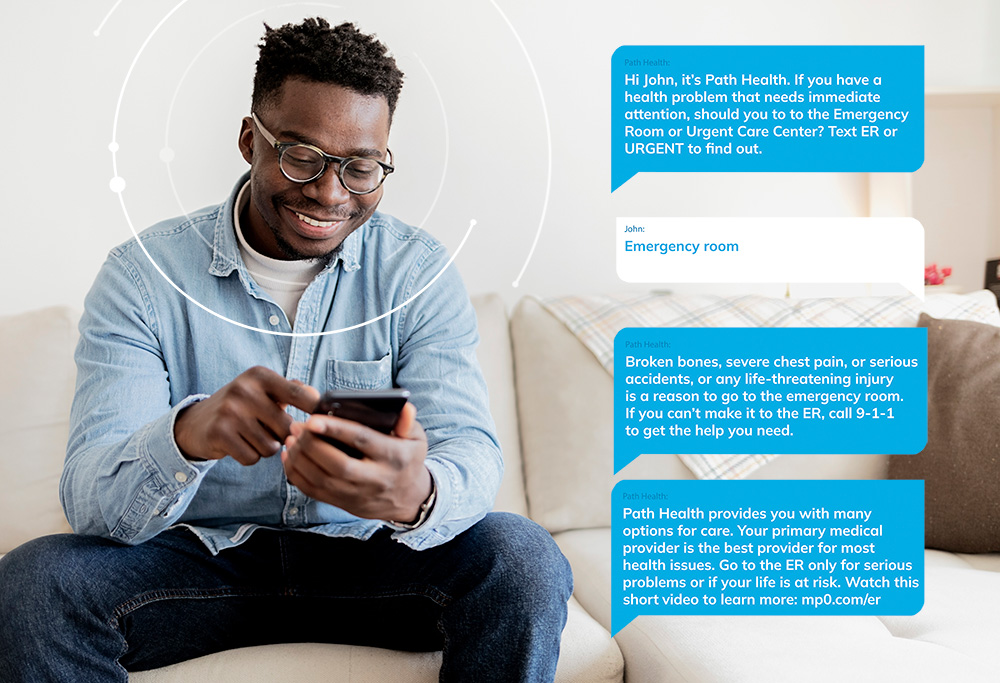In today’s world of information overload, capturing health plan members’ attention and encouraging them to take preventive health measures isn’t easy. It’s even more challenging when members are experiencing health disparities due to race, ethnicity, socioeconomic factors, and other social determinants of health. To address this challenge, mPulse Mobile created an innovative way to encourage members to get screened for colorectal cancer.
Specifically, mPulse’s approach combines text messages powered by conversational AI with visual storytelling to address misconceptions, raise awareness, model healthy behaviors, add an element of humor, and build overall health literacy.
To evaluate the clinical value of this approach, mPulse and The AltaMed Institute for Health Equity partnered to research the impact of text messages and fotonovelas on encouraging colorectal cancer screenings with socially vulnerable groups. They conducted a study to determine whether members were more likely to get screened after receiving
- A series of bidirectional texts that tailor responses to address individual screening barriers, and
- Fotonovelas or illustrated comic strips that tell a story explaining the importance of early detection and encouraging screenings.
An important motivation was to use culturally relevant messaging to engage these groups and to measure whether it could yield improvements in outcomes equitably across populations.
Evaluators at the Center for Community Health and Evaluation (CCHE), part of the Kaiser Permanente Washington Health Research Institute, independently evaluated the intervention. The results, recently published in JMIR Cancer, a peer-reviewed journal focusing on innovation and technology in cancer care and research, were very positive: nearly 40 percent of patients who received texts and fotonovelas responded, and they had significantly higher screening rates than those who did not receive the texts and fotonovelas.
The program was developed by mPulse and combined interactive text messages and fotonovelas to educate and activate patients throughout the four-week outreach. When patients shared their reasons for not completing the screening, the conversational AI platform provided relevant automated responses to address these barriers and to influence their health beliefs and behavior.
A Closer Look at Colorectal Cancer
Colorectal cancer is the second-leading cause of cancer death in the US, accounting for an estimated 151,030 new cases and 52,580 deaths in 2022. With appropriate screening, however, it is mostly preventable and can be treated successfully when localized and diagnosed early. Indeed, the five-year relative survival rate for localized colorectal cancer is more than 90%.
Several screening tests can be used to find polyps or colorectal cancer, including an at-home stool test known as the fecal immunochemical test (FIT) which uses antibodies to detect blood in the stool. Upon completing the test, the patient mails it back to the health plan.
Barriers to Screening
A key step in improving screening rates is understanding why patients don’t get screened.
Studies have identified several potential barriers, including feeling fine and not understanding the need for the test, being busy or forgetful, expressing fear about what the test may indicate, the potential risk of perforation, embarrassment about a fecal collection procedure, concerns about mailing fecal matter, mistrust of the healthcare system, and the cost of follow‐up colonoscopy. Limited health literacy is another stumbling block, particularly when combined with cultural health beliefs and linguistic barriers.
The barriers impacting different populations vary which contributes to differences in screening rates and cancer diagnoses. For example, researchers report that Hispanics have significantly lower rates of screening for colorectal cancer than non-Hispanic Whites, and are more likely to be diagnosed with advanced disease.
The Study
AltaMed, the largest federally qualified community health center (FQHC) in California, and one of the largest nonprofit FQHCs in the nation, serves approximately 300,000 patients across Southern California and routinely mails out FIT kits to patients due for colorectal screening.
As part of usual care, about 11,000 patients who were due for a screening received a text message with a link to an instructional video, a follow-up text reminder, and a call from a patient navigator within a month if they still hadn’t returned the FIT kit.
Three months after the kits were mailed, 5,241 patients, age 50-75 years, had not returned the FIT kit and they were randomized into two groups for the study: the intervention group which received additional outreach (texts and fotonovela over four weeks), and the control group (no additional outreach).
A majority of patients in the intervention group were Hispanic or Latin American. mPulse has developed an index to map social determinants of health (SDOH) impact levels (using several census variables) and over 75% of patients in the study were living in neighborhoods where SDOH might negatively impact health access and health equity, resulting in health disparities.
The texts and fotonovelas were designed and implemented by mPulse to educate, remind, and encourage patients to return their FIT kit. All text messages were in patients’ preferred language, either English or Spanish, and written at a sixth-grade reading level or lower.
In the first week, the texts focused on building health literacy about colon cancer and screenings, and the purpose of the FIT kit. Week two texts sought to uncover barriers by asking why the patient hadn’t yet taken the test. The next week gathered feedback on the fotonovela and its impact on health beliefs and behaviors; and the last week was a final reminder to mail back the kit.
If patients replied to the texts, the conversational AI used natural language understanding (NLU) to “listen” for known barriers and other expected replies and provided automated responses to create logical conversation flows.
Conversational AI
Patients could text back in their own words, and their responses were handled using rules and conversational AI. This was also an opportunity to build health literacy and raise awareness about the need to get screened regularly. Here is a sample conversation:
Patient’s reply:
“I don’t know why I need the test; I feel fine and have no symptoms.”
Automated response:
“It turns out most people with colon cancer feel healthy and have no symptoms. And most people with colon cancer also have no family history of the disease. This is a quick and easy way to find out if there are any problems.”
Similarly, if a patient replied, “I’m worried about getting COVID-19 if I come into the clinic”, the system was listening for COVID anxiety and would respond immediately by reassuring the patient using conversational AI.
The automated response was: “You don’t need to come into the clinic right now. Just mail back the FIT colon health test kit that we sent you in the mail. If the results are abnormal, somebody from AltaMed will contact you. Don’t let your worries about coronavirus get in the way of completing the test. It’s quick and easy!”
Thus, patients received timely and relevant information as part of a meaningful back-and-forth dialogue in real time.
Fotonovelas
 The fotonovelas were created to address barriers such as procrastination, lack of self-care, lack of time, embarrassment about the process, and fear of results. They were developed in Spanish and English, in collaboration with the AltaMed Institute for Health Equity, and there were separate versions for men and women.
The fotonovelas were created to address barriers such as procrastination, lack of self-care, lack of time, embarrassment about the process, and fear of results. They were developed in Spanish and English, in collaboration with the AltaMed Institute for Health Equity, and there were separate versions for men and women.
To ensure that the fotonovelas were compelling, the storyline used characters who were 50–75-year-old Hispanic or Latino patients and who looked and talked like they could be the patient’s best friend or neighbor. And the fotonovelas reflected the central role of family in the Latino community by emphasizing that the characters were getting screened not just for their own health, but for the sake of their loved ones as well. All fotonovelas also contained a call to action for patients to use and return the kit. Sample frames are shown below for the English versions (there were 9 frames in each fotonovela). The second fotonovela can be viewed in full in the JMIR Cancer publication.
Results
Approximately 40% of the patients engaged with the text messages (1,026 patients responded to at least one text out of the 2,597 patients in the intervention group). This is considerably higher than the typical engagement rate with screening reminders. Interestingly, patients who did engage were quick to respond and 86.1% of those who engaged did so within an hour of receiving a text. Of the patients who engaged, 31% clicked on the link to view the fotonovela.
Most importantly, there was a statistically significant 7 percentage point difference in screening: 18.8% of patients in the intervention group were screened, compared with 11.6% of those in the control group.
Social Determinants of Health and Health Equity
A central consideration in the study was to understand whether culturally tailored text messages and fotonovelas could drive behavior change in patients experiencing disparities due to sociodemographic and social determinants of health factors such as race, ethnicity, income, cultural linguistic barriers, and geography. The results suggest that layering text and visual modalities was particularly effective, with these subgroups showing higher screening rates than the group average. Spanish speakers in the intervention group had an 8.2 percentage point improvement in screening rates (compared to a 5.7 percentage point improvement among English speakers). Similarly, patients in very high need areas and high need areas based on SDOH had an 8.5 percentage point improvement and 7.2 improvement in screening rates respectively (compared to a 2 percentage point improvement in very low need areas). Finally, among those who had never been screened for colon cancer, there was a 6 percentage point improvement in screening rates.
Bringing it All Together: The Impact of Conversational AI and Fotonovelas
Most patients who engaged with the text messages, fotonovelas, and conversational AI had positive or neutral responses and there were very few negative responses. This study underscores how the combination of text, images and tailored responses can help health plans build health literacy and influence health beliefs and behavior in an innovative and culturally relevant way, while achieving positive clinical results. Looking ahead, the mobile health solution in this study provides a robust and replicable model to uncover and address barriers to screening and to improve colorectal screening rates, particularly for disparate and socially vulnerable populations. Increasing the number of screened patients typically leads to more early detection of colorectal cancer, which in turn, can save lives.
The author, Rena Brar Prayaga, is an Impact Tech Advocate and a Behavioral Data Scientist. She is also an Advisor at mPulse Mobile, and a co-author of the study published in JMIR Cancer.













